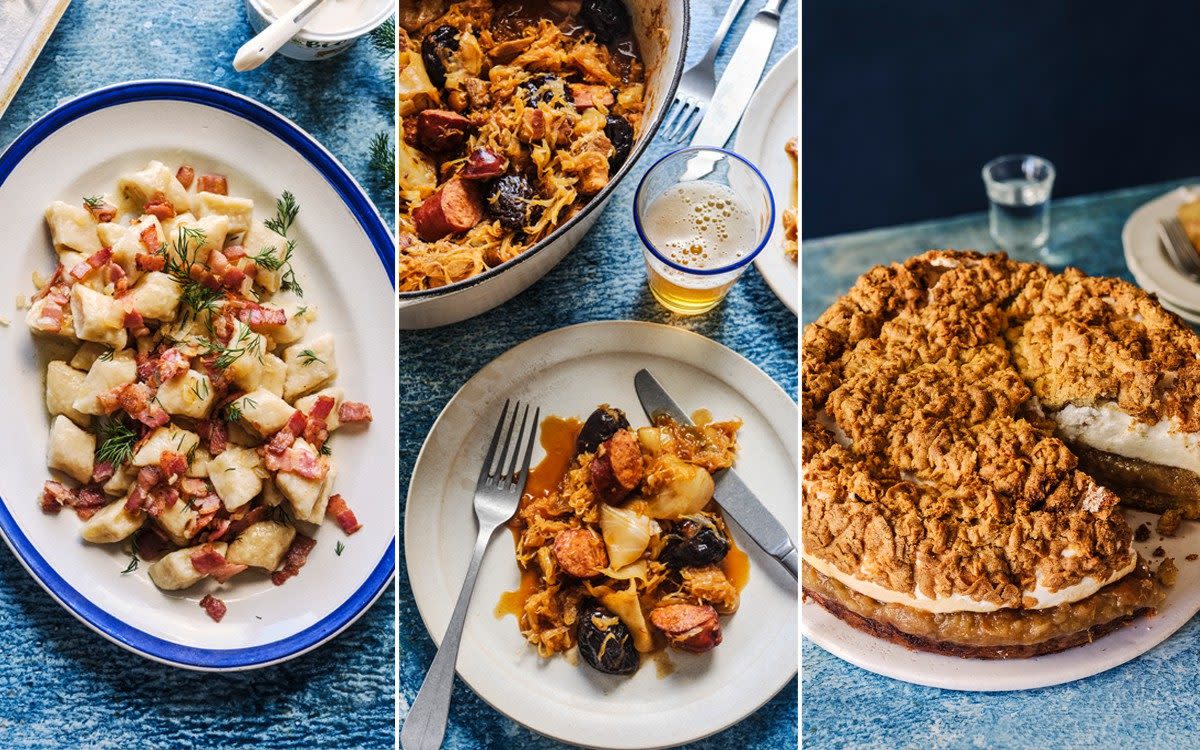Comforting recipes for a classic three-course Polish feast

Social media takes you down rabbit holes. When I was first on Twitter I fell in with a group of mad perfume lovers. When we met in real life we brought perfumes for each other. They were all keen cooks, which isn’t surprising when you think about it; sensual experiences are important to us. In those days I thought Twitter was a good thing.
Last summer I went to Poland for the first time because of a baker I ‘met’ on Instagram. Monika Walecka has arms covered in gorgeous intricate tattoos and a mane of wild dark hair. She looks like a warrior baker. Her rye and sourdough loaves have fantastic sepia-coloured crusts and she frequently visits other bakeries in Europe just for inspiration (you can note her recommendations for your own future trips to Paris, for example). I thought meeting a baker and tasting her bread was an excellent reason to go to Warsaw.

Until then I had only read Ren Behan’s book on Polish food, Wild Honey & Rye (Pavilion, £26). Ren was born in the UK to Polish parents – they came as refugees – and grew up eating Polish food, speaking Polish and having holidays in the Polish countryside. Because of Ren (whose apple cake recipe I share below), I thought I knew what to expect. There’s rarely a meal without soup, for example, though they’re not always hot – the cold beetroot soup is a joy of summer. Ferments, pickles, salads and vegetables are at the core of Polish meals, and they make the best of what they have. ‘People became resourceful during communism,’ Ren tells me. ‘If you had a bit of green space, you would grow your own food, and foraging is a national pastime.’
By chance, I ended up in Warsaw in wild blueberry season. It’s difficult to convey what a huge thing this is in Poland. For six weeks people eat blueberry buns in different forms, but mostly in a sweet brioche dough with a crumble topping. When I met Monika at Cala W Mące, her first bakery in Warsaw, the queues for blueberry buns stretched round the corner and, in a back room, teenagers were sorting through vast baskets of the sweet-tart wild berries. Monika was covered in flour and working round the clock to meet demand. ‘It is a crazy period, an intense six weeks. But we must do it,’ she exclaimed, as if she was providing a public service. We had strong coffee and ate every blueberry bun she gave us, plus apricot and plum tarts, then went to the Saturday morning market nearby.
Food lovers rave about the produce at markets in France and Italy, and I immediately felt bad for promulgating this attitude, for not thinking beyond the obvious. In Warsaw I drank in colour: crimson radishes, the brightest spring onions, whorls of lettuce and golden wild mushrooms, shiny peppers, duck eggs and purple plums. There were no tourists – the shoppers were getting on with the serious business of deciding what to cook, not going into romantic reveries.
I wished I had access to a kitchen.
‘Poland to me means pierogi, schabowy [Polish-style schnitzel], beetroot, cucumber salad, sausages and buckwheat,’ says Monika. ‘Our kitchen has a distinctive character while being comforting.’ Before you eat pierogi, you hear Poles rave about them but pay little attention. Once you’ve tried them, you want them to be available every day. You’ll find ‘lazy pierogi’, which are a bit like gnocchi, along with pierogi made with dough and stuffed with wild mushrooms and sauerkraut or potatoes and cheese. With both types, melted butter is a must. I started to disappear to the cheap café round the corner from the hotel every lunchtime. My solitary pleasure. Dear pierogi, lazy or traditional, I’m sorry I didn’t discover you earlier.
Poland, I feel the same about you. Next stop, Gdańsk.